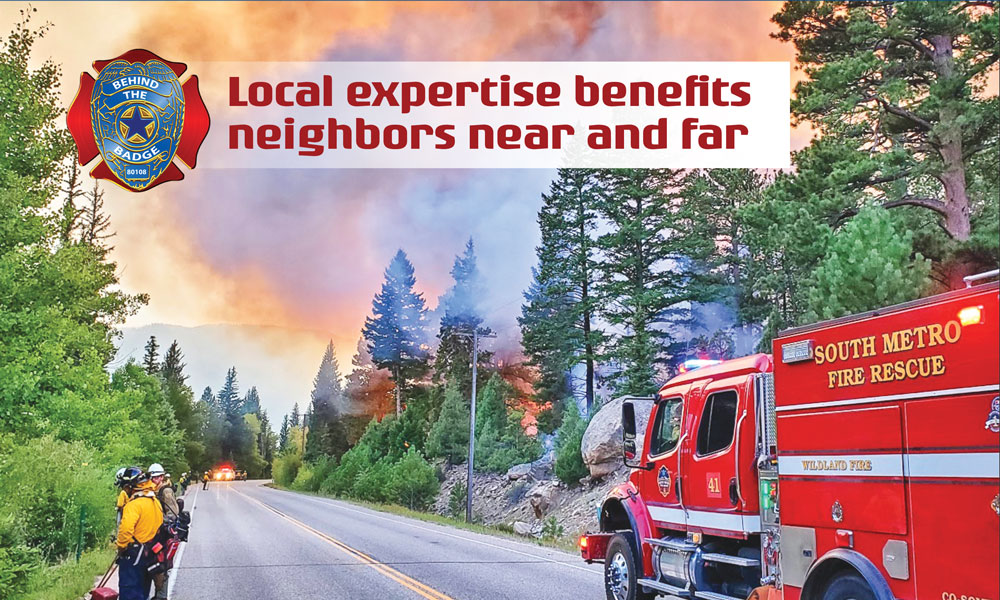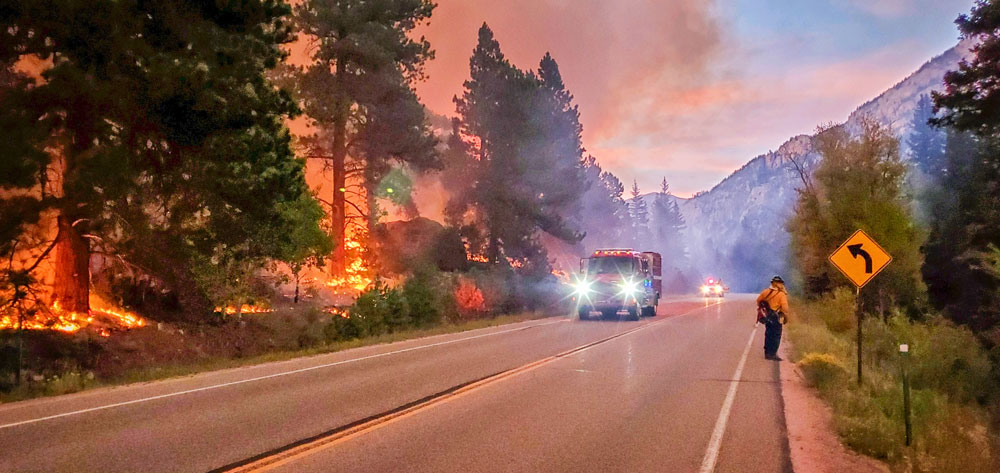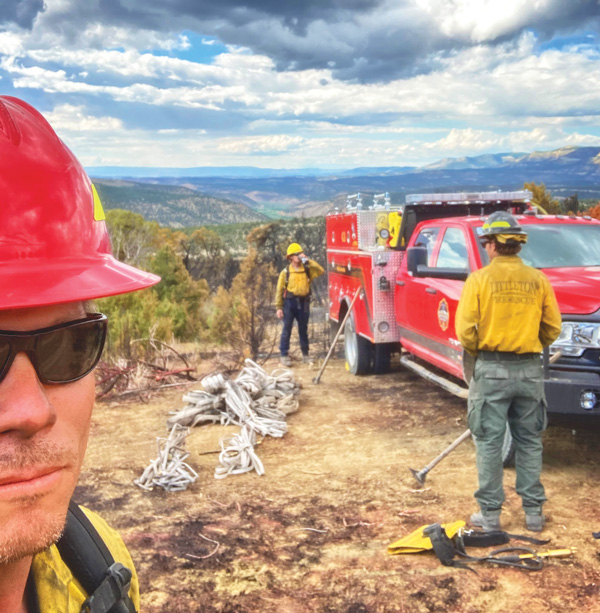Local expertise benefits neighbors near and far
By Celeste McNeil; photos courtesy of Brian Delasantos

South Metro Firescue (SMFR) Station 39 on Happy Canyon Road is one of three fire stations staffed with specialty wildland equipment and teams that are highly trained to fight fires in urban and wild conditions, like the Cameron Peak fire in Northern Colorado last year. These Wildland Teams, including the firefighters from Station 39 – one of whom is a Sapphire Pointe resident – also deploy for mutual aid around the country.
Captain Brian Delasantos grew up a mile from the local volunteer fire station in Sebastopol, California. That proximity created curiosity, which led Delasantos to join the firefighters Explorer program while in high school. Delasantos moved beyond the Explorers after a couple of years, joining the volunteer force as a full-fledged firefighter and earning a degree in fire science.
Delasantos made fighting fires a career and Colorado his home when he took a job with Littleton Fire Rescue (LFR) in 1994. He spent 25 years with LFR and joined South Metro Fire Rescue (SMFR) in 2019 when LFR and SMFR merged.
In 1998, he helped form a wildland fire team at LFR and has stayed active in the Wildland Team since. Wildland Teams require training beyond what is expected for general firefighting, including advanced certifications, additional classroom courses, and extra training about specifics such as fireline leadership, firefighter safety, fire behavior, structure defense and additional groundwork with specific resources like chainsaws, drip torches and unique hand tools. SMFR’s wildland training meets or exceeds all national standards.
The highly trained SMFR wildland firefighters are qualified for deployment to help with fires around the country. Delasantos has traveled coast to coast on two-week deployments, from the Great Dismal Swamp on the Atlantic Coast at the North Carolina and Virginia border to California on the Pacific Coast. He and his team average between five and 15 deployments per year.
While summer and fall tend to be Colorado’s wildfire season, other parts of the country peak at different times of the year. “The southern states tend to have fires in the early spring until early summer. We could be in Florida or Texas in March, then to the southwest in May and June and anywhere in the western U.S. from June through November,” Delasantos said.
Wildland firefighters have many prediction tools, including data from previous fires to help make decisions about which strategies or tactics might work best.
Delasantos, Wildland Teams, and local, state and federal agencies across the country learned important communication and safety lessons from the South Canyon Fire near Glenwood Springs in 1994, which killed 14 wildland firefighters.
Other fires are memorable for different reasons. The lateral west fire at Great Dismal Swamp National Wildlife Refuge in 2011 is one Delasantos won’t soon forget. “We felt an earthquake while on the fireline (the same one that damaged the Washington Monument) and a few days later, Hurricane Irene ran right on top of us and put the fire out.”
The Castle Pines community benefits from the increased training and experience of the wildland team.
“With more real-life experience, our team members can hone their craft and therefore fight fires much more safely and proficiently. The knowledge, skills and confidence gained in a year or two from deployments can quickly out pace similar hands-on experience from the span of a whole career. “In the end, it’s our citizens that truly benefit when we’re able to contain fires more quickly and efficiently,” said Delasantos.

